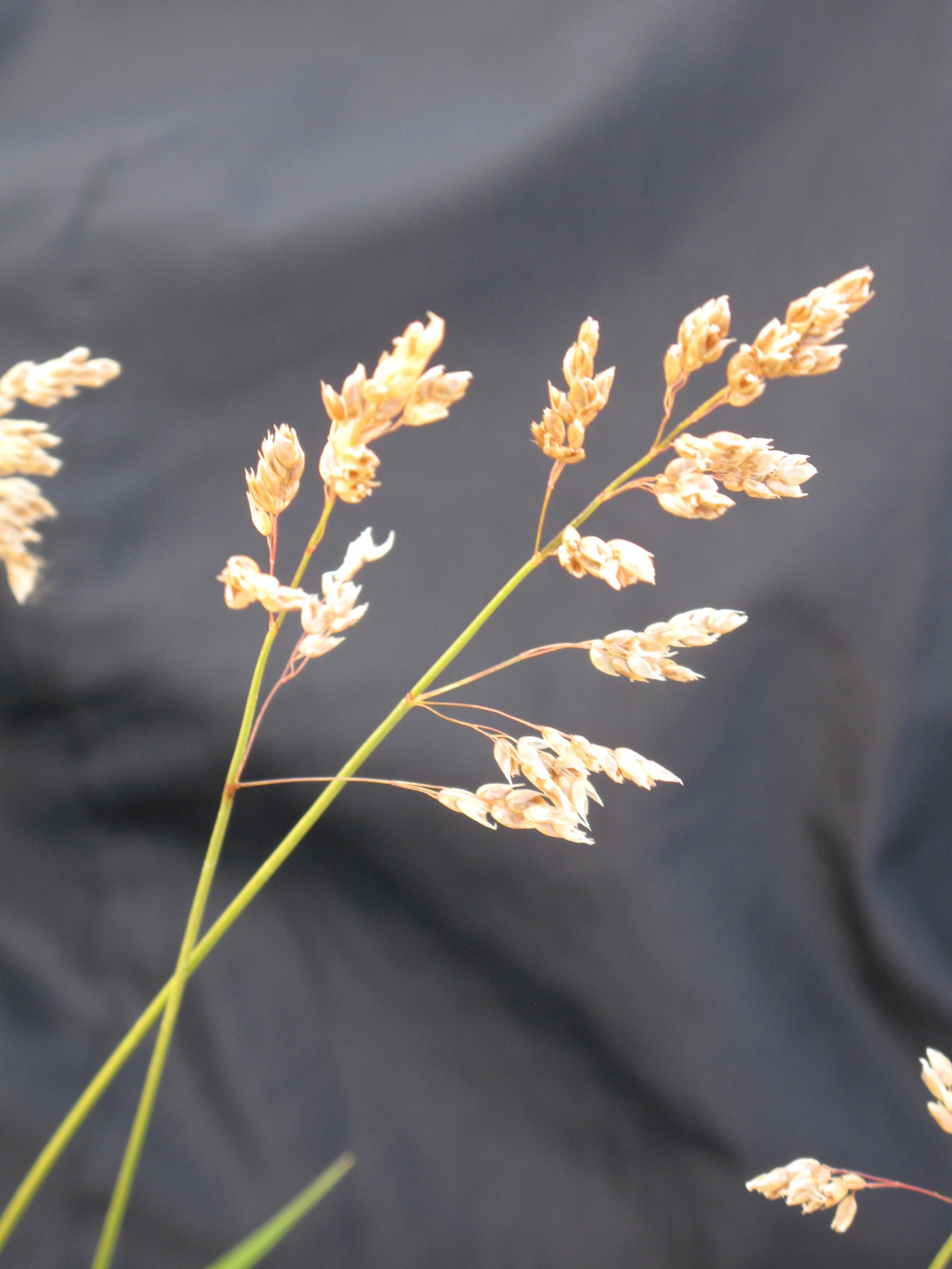Sweetgrass
Ethnobotany
Sweetgrass occurs in wet areas throughout the prairie. The stem is 30–60 cm high, with leaves 5 cm long and 2–6 mm wide. The seed heads are 10–15 cm long. The amazing quality of this grass is its wonderfully sweet fragrance. Evidence of the enthusiasm the Blackfoot felt for this grass is in the four names they gave it—all meaning fragrant smell. The presence of coumarin (an aromatic organic compound that delays or prevents blood from clotting) accounts for its lingering fragrance. (Johnston 20)
The grass was dried then braided, and used in many ways. For personal grooming, it was braided into clothing and carried in leather sachets, or women wore the braid around their heads. Water in which it had been soaked was used to wash hair. Ceremonially, it was burned on a small altar found in many lodges. It was used in the Sun Dance ceremony, and it was mixed with tobacco in ceremonial smoking. Finally, it had medicinal uses. Smoke from burning leaves was inhaled to treat colds. Even horses benefited from its properties as it was used to treat saddle sores. (Johnston 21–22)
Botany
Growth habit and range: This is a cool season, rhizomatous grass which is commonly found on wet sites on the prairies. It grows to a height of 30–60 cm.
Description: The blades are 2–6 mm wide and up to about 5 cm in length, dark green and shiny. The flowers occur in an open, golden yellow, shiny panicle which is 10–15 cm long, pyramidal in shape and up to 7 cm wide at its’ base. Each brownish seed is 4 mm in length.
References
Johnston, Alex. 1987. Plants and the Blackfoot. Occasional Paper No. 15., Lethbridge Historical Society, AB.

